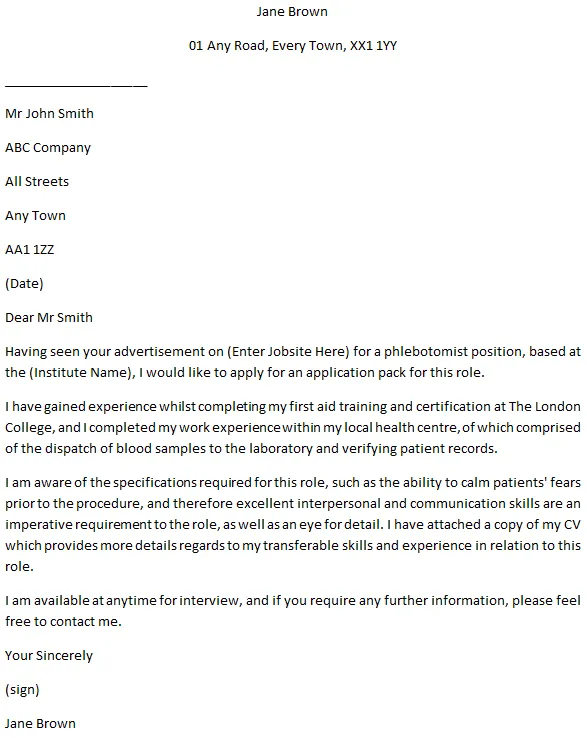Crafting a Winning Phlebotomist Cover Letter
A well-crafted cover letter is your first opportunity to make a strong impression on a potential employer. For phlebotomists, a cover letter is crucial. It’s not just a formality; it’s your chance to showcase your skills, experience, and passion for the field. A compelling cover letter can set you apart from other candidates, highlighting your qualifications and making a persuasive case for why you’re the best fit for the job. This guide provides a comprehensive approach to writing a cover letter that grabs attention and increases your chances of getting hired as a phlebotomist. It covers everything from the basic components to advanced techniques for tailoring your letter to specific job requirements.
Understanding the Purpose of a Cover Letter
The primary goal of a cover letter is to introduce yourself and demonstrate your suitability for the phlebotomist position. Think of it as a marketing tool, where you’re selling your skills and experience to the hiring manager. The cover letter provides a narrative that complements your resume, allowing you to elaborate on your qualifications and connect them to the specific needs of the employer. A well-written cover letter shows that you’ve done your research, understand the role, and are genuinely interested in the opportunity. It also provides insight into your communication skills and professionalism, qualities that are essential in a healthcare setting.
Why a Cover Letter is Essential
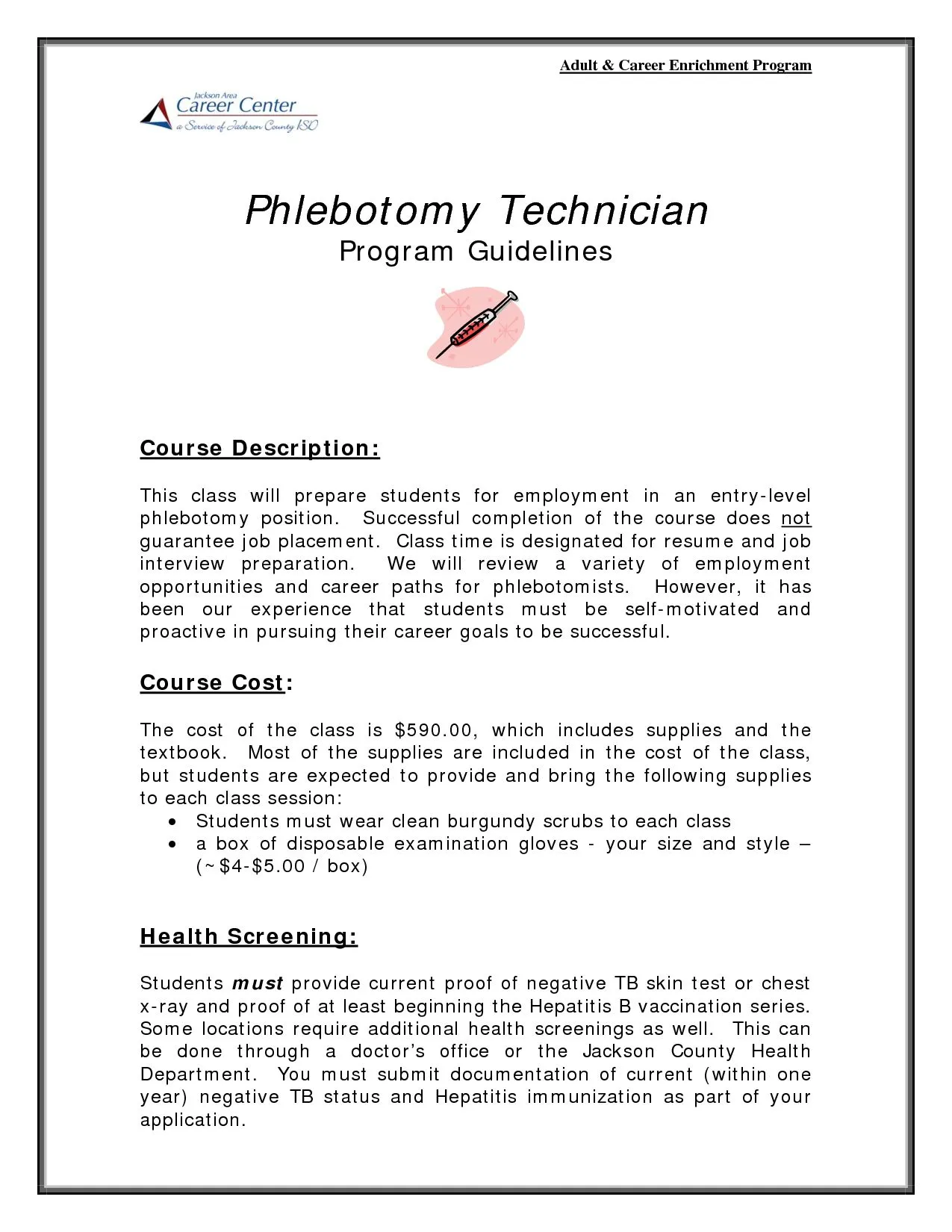
While a resume provides a snapshot of your qualifications, a cover letter offers the opportunity to tell your story. It allows you to explain gaps in your employment history, highlight specific skills that match the job requirements, and express your personality and enthusiasm. It also demonstrates your written communication skills, which are critical in healthcare settings where clear and concise communication is essential. In a competitive job market, a cover letter can be the deciding factor in whether your application gets noticed. It gives you the chance to go beyond the basic information in your resume and make a memorable impression on the hiring manager. A cover letter also shows that you are proactive and detail-oriented.
Key Components of a Phlebotomist Cover Letter
Every effective cover letter has several key components that ensure it’s informative, professional, and engaging. These elements work together to create a cohesive and compelling introduction to your qualifications and aspirations. Including each of these elements in your cover letter significantly boosts your chances of getting the job. Let’s delve into each of them, making sure you understand why they are essential for your success.
Your Contact Information
Start your cover letter with your full name, address, phone number, and email address. This information should be at the top left of the page. Make sure your email address is professional and appropriate. It’s vital that the hiring manager can easily contact you. If you have a LinkedIn profile, you can include the link here as well. Accuracy is key; double-check all details to avoid any errors that could prevent the employer from reaching you. Your contact information establishes your identity and provides the employer with essential information to contact you for an interview.
The Date
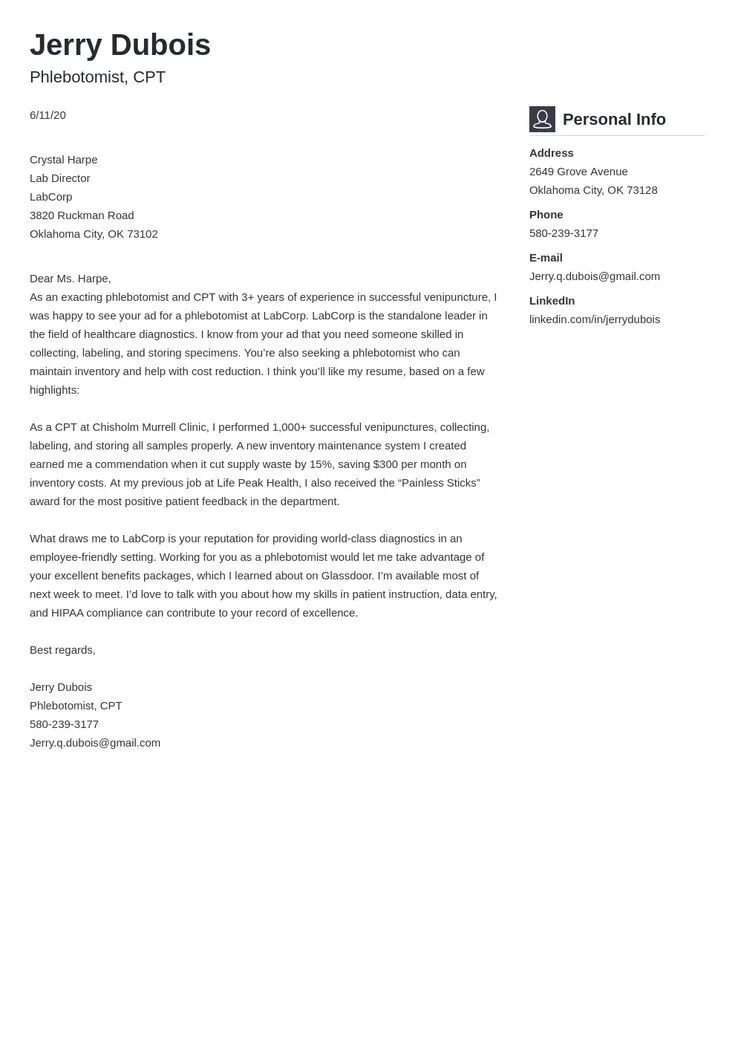
Below your contact information, include the date you are writing the letter. This helps the employer know when you applied for the position. This date usually aligns with the submission date of your application. Place the date on the left side of the page to maintain a professional look. Formatting the date properly also adds to the polished appearance of your letter, showing attention to detail and organizational skills.
The Hiring Manager’s Information
Address the letter to the hiring manager by name if possible. Research the company to find out the name and title of the hiring manager. Use the appropriate title (e.g., Mr., Ms., Dr.) followed by their full name. If you can’t find the name, use a general greeting like “Dear Hiring Manager.” This shows you’ve taken the time to learn about the company and its staff. Addressing the letter to a specific person makes your application feel more personal and demonstrates your initiative. It shows that you have a personal interest in the opportunity.
The Salutation
The salutation sets the tone for your letter. Use “Dear [Hiring Manager’s Name]” if you know the name. If not, use a professional alternative like “Dear Hiring Manager.” Avoid overly casual greetings. A well-chosen salutation reflects professionalism and respect. Correct salutation sets a positive tone from the very beginning, demonstrating your courtesy and professionalism. It is an essential element for creating a strong first impression.
Opening Paragraph Grab Their Attention
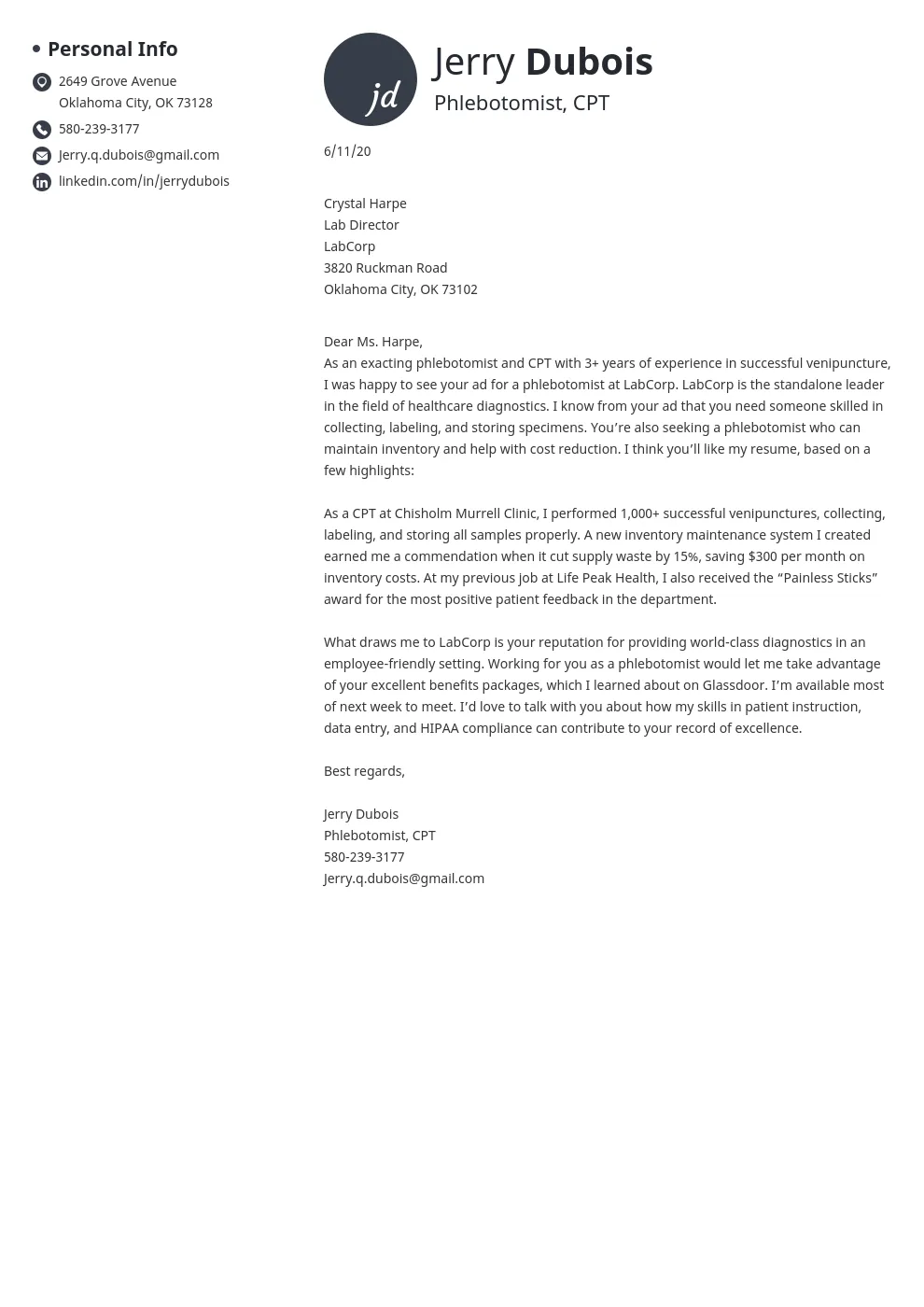
Your opening paragraph is your first opportunity to make a strong impression. It should be engaging, concise, and clearly state the purpose of your letter. The goal is to immediately capture the reader’s attention and make them want to read more. Begin by stating the specific position you’re applying for and where you saw the job posting. Then, briefly highlight one or two of your most relevant skills or experiences that make you a great fit for the role. Keep it brief, direct, and focused on the employer’s needs. An impactful opening paragraph encourages the hiring manager to continue reading, increasing the chances that they will consider your application.
Highlight Your Passion for Phlebotomy
Express your enthusiasm for phlebotomy and healthcare. Share what specifically interests you about the field and the company. Show your genuine interest in the role, the organization, and its mission. Convey your passion for patient care and attention to detail. Highlighting your passion can set you apart. Many applicants might possess the required skills, but a genuine enthusiasm for the role makes you memorable and shows that you will bring more than just your technical skills to the table. This will make you stand out from other applicants.
Mention Where You Saw the Job Posting
Start your cover letter by clearly stating the position you are applying for and where you found the job posting. Be specific (e.g., “Phlebotomist position advertised on Indeed”). This helps the hiring manager quickly understand your application. Mentioning the source is a courteous way to acknowledge the company’s recruitment efforts. This provides context for the hiring manager and ensures your application is processed correctly. This initial piece of information ensures that the hiring manager can easily connect your application with the specific job posting.
Body Paragraphs Show Your Skills and Experience
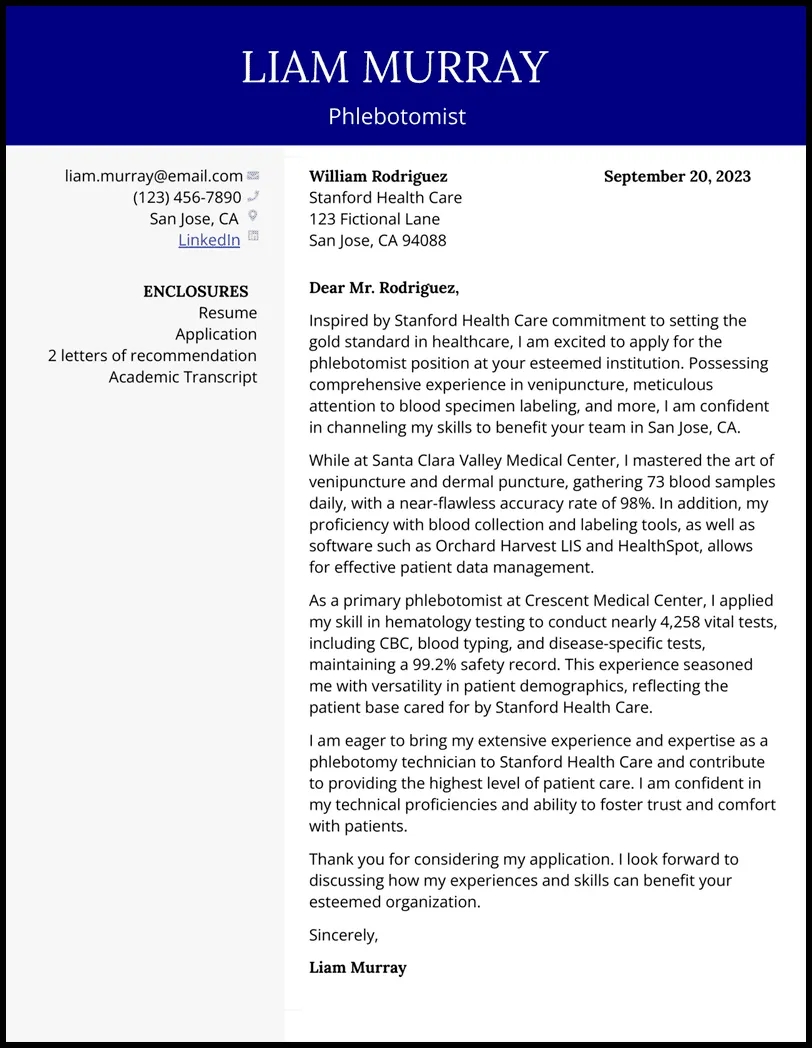
The body paragraphs are where you expand on your qualifications. Use these paragraphs to showcase your relevant skills, experience, and achievements. Tailor your content to align with the job description. This section is your opportunity to demonstrate how your abilities and experiences make you the perfect candidate for the phlebotomist position. Focus on providing clear and concise information that supports your claims. Make the information relevant and easy to read to keep the recruiter engaged with your application.
Emphasize Relevant Skills
Highlight the skills that match the job requirements. Some common phlebotomy skills include venipuncture, patient communication, and specimen collection. Consider skills like patient care, infection control, and attention to detail. Provide specific examples to illustrate these skills. This shows you don’t just possess the skills, but also how you have used them in the workplace. When you match skills to the requirements, you demonstrate that you have the right capabilities to excel in the phlebotomist position. You can use concrete instances to support your claims and give your cover letter credibility.
Detail Your Experience
Briefly describe your phlebotomy experience. If you have previous experience, specify the setting (e.g., hospital, clinic). Mention the types of procedures you’re familiar with. Outline your responsibilities and the tasks you performed. Provide details about the type of patients you worked with. Detailing your experience helps the hiring manager understand your background. Include the relevant information that proves your ability to handle the job. Providing specific details will make your application more compelling and show that you’re a well-suited candidate for the position.
Quantify Your Achievements
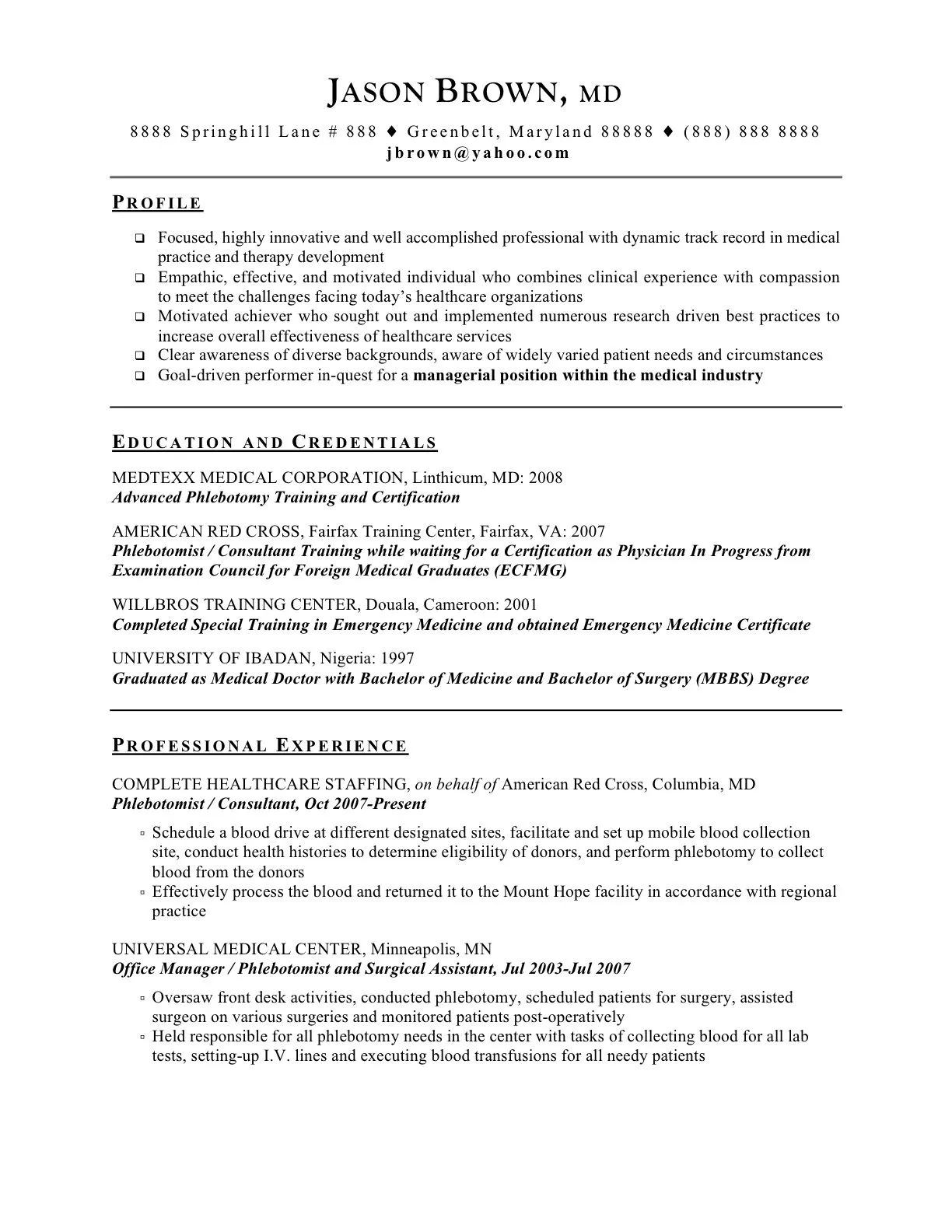
Use numbers and data to quantify your accomplishments. For instance, mention the number of blood draws you perform daily or the percentage of successful draws. Include how you contributed to improving patient satisfaction or reducing errors. These quantifiable achievements demonstrate your impact and effectiveness. Using numbers provides concrete evidence of your abilities. Use numerical data to illustrate the value you bring to the role. By including measurable achievements, you demonstrate your capability to achieve positive outcomes and provide credibility to your claims.
Closing Paragraph Call to Action
Your closing paragraph is your final opportunity to leave a lasting impression. It should summarize your interest in the position, reiterate your qualifications, and include a clear call to action. The goal is to encourage the hiring manager to contact you for an interview. It serves as a concise summary of your qualifications and enthusiasm. It also prompts the hiring manager to take the next step. A well-crafted closing paragraph is crucial for moving your application forward and securing an interview.
Express Your Enthusiasm
Restate your enthusiasm for the position and the company. Mention why you’re excited about the opportunity to contribute. This reinforces your interest and makes you more memorable. Highlighting your enthusiasm helps connect with the hiring manager on a personal level. Ensure your interest is clear, demonstrating your strong desire to join the team. Show that you are eager to learn more about the position and are motivated to contribute to the company’s success. This can make a significant impact.
Thank the Hiring Manager
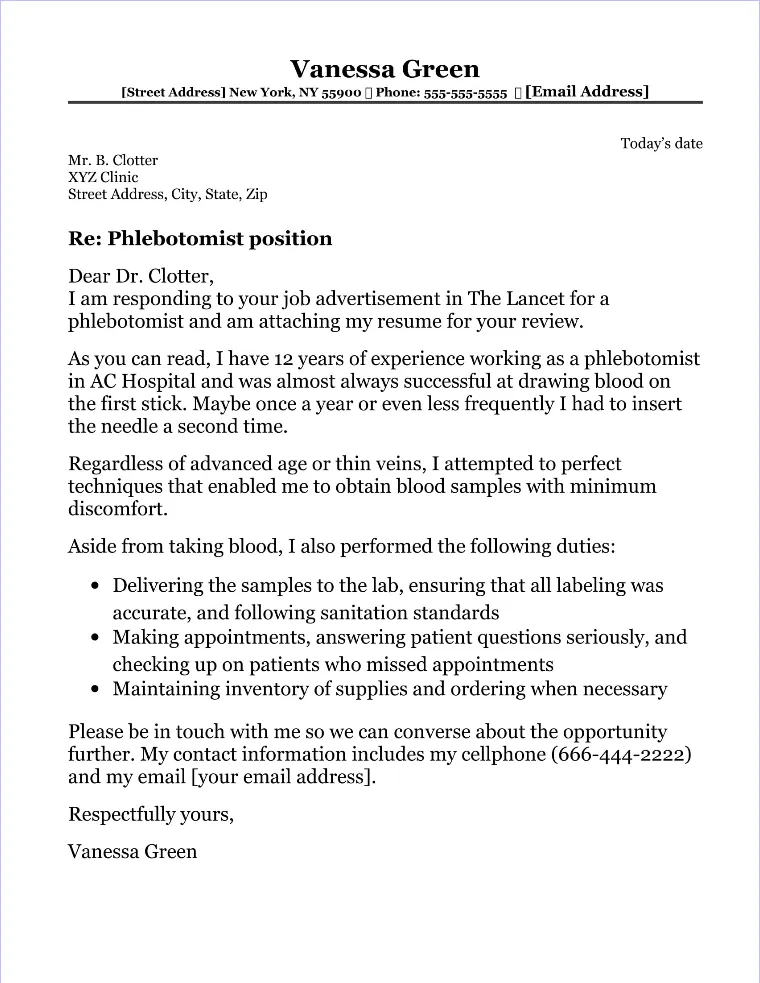
Express gratitude for the hiring manager’s time and consideration. Show your appreciation for their review of your application. This demonstrates professionalism and respect. A simple “thank you” goes a long way. Expressing gratitude shows your understanding of the hiring process and respect for the time the recruiter spends on your application. This makes a positive impression. This also shows respect for the time the hiring manager has taken to review your application.
The Formal Closing
Use a professional closing, such as “Sincerely,” or “Respectfully,” followed by your full name. This is a formal end to your cover letter. Ensuring a professional ending shows respect for the reader. A formal closing reinforces your professionalism and leaves the reader with a positive, polished final impression. Use a proper sign-off to maintain the professional tone of the letter. This is essential to maintain a positive tone and ensure your application’s professional look.
Proofreading and Formatting
Before submitting your cover letter, it’s essential to proofread and format it to ensure professionalism. Errors and poor formatting can detract from your message. Proofreading and formatting also help ensure that your cover letter reflects your attention to detail. A polished and well-presented cover letter enhances your credibility. It showcases your professionalism and ensures that your qualifications are easily understandable and impressive to the hiring manager. It also makes a strong impression, indicating your commitment to accuracy.
Proofread for Errors
Carefully check for any grammatical errors, spelling mistakes, and typos. Read your cover letter aloud to catch mistakes. Have a friend or family member review your letter for a second opinion. Proofreading is an essential step in the cover letter writing process. Small errors can undermine your credibility. Proofreading helps you present yourself professionally and ensures the hiring manager focuses on your qualifications, not the mistakes. This careful review underscores your attention to detail. Ensure your cover letter is free of errors by conducting thorough proofreading. This will contribute to your professional image.
Formatting Tips
Use a professional and easy-to-read font, such as Times New Roman or Arial, in a standard size (11-12 points). Ensure your cover letter has clear formatting, with appropriate spacing between paragraphs. Keep your cover letter concise, ideally one page. The formatting is essential for readability. Avoid using a complicated font or large blocks of text. Use a professional and simple format. The aim is to make it easy for the hiring manager to read and understand your cover letter. Proper formatting helps the hiring manager to focus on your message.
Tailoring Your Cover Letter
Customize your cover letter for each job application. Don’t use a generic template. Tailoring your cover letter is crucial for highlighting your suitability for the specific role. Demonstrating that you have taken the time to understand the company and the job requirements is important. Personalizing your cover letter shows that you’re seriously interested in the opportunity. Tailoring the letter will increase your chances of success. It helps to ensure your qualifications and experiences align with the specific requirements of the role.
Research the Company
Before writing your cover letter, research the company. Learn about its mission, values, and recent activities. Tailor your letter to align with the company’s goals. Researching the company shows your interest and initiative. Showing that you have researched the organization demonstrates your initiative. Understanding the company can help you to show that you are a good fit for the position. Your research informs the content of your letter, making it relevant and personalized.
Customize for Each Job
Review the job description carefully and tailor your letter to the specific requirements. Highlight the skills and experiences that match the job responsibilities. Use the keywords from the job description in your letter. Customizing your cover letter for each job increases your chances of getting selected. By tailoring your cover letter, you demonstrate how your unique skills match the role. This customization shows that you are a good fit for the role. Tailoring your cover letter to match the specific job description will increase your chances of getting selected.
